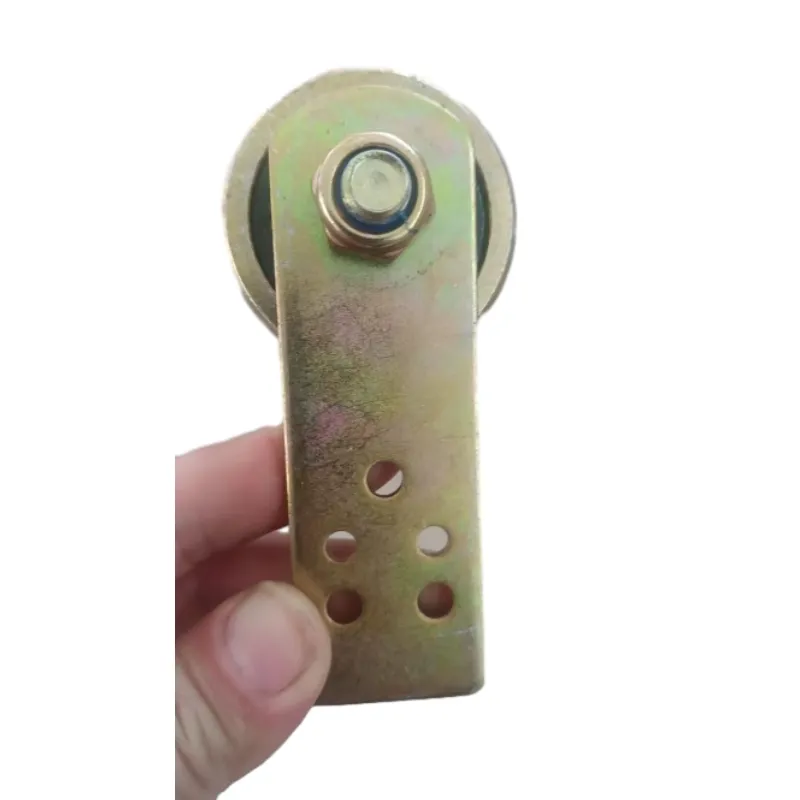
Dec . 18, 2024 21:02 Back to list
taper roller bearing housing design
Taper Roller Bearing Housing Design An Overview
Taper roller bearings are a crucial component in various engineering applications, providing excellent load capacity and operational efficiency. The design of their housing is equally significant, as it directly influences the performance, durability, and reliability of the bearing assembly. This article delves into the essential aspects of taper roller bearing housing design, highlighting its importance, key considerations, and best practices.
Importance of Housing in Taper Roller Bearings
The housing for taper roller bearings serves several critical functions. First and foremost, it provides a stable and secure environment for the bearings to function correctly. The housing aligns the bearings, ensuring that they operate under optimal conditions. Moreover, it protects the bearings from external contaminants, such as dirt and moisture, which can significantly reduce their lifespan and effectiveness.
Additionally, the housing helps dissipate heat generated during operation, which is vital to maintaining the mechanical integrity of the bearings. Bearings that experience excessive heat can lead to premature failure due to lubrication breakdown or thermal expansion. Therefore, effective housing design is essential to enhance the lifespan and reliability of taper roller bearings.
Key Considerations in Housing Design
When designing housing for taper roller bearings, several key factors must be taken into account
1. Material Selection The choice of material directly impacts the strength, durability, and thermal properties of the housing. Common materials include cast iron, aluminum alloys, and various steels. The selected material should withstand operating conditions, including temperature fluctuations and mechanical stresses.
2. Dimensional Accuracy The dimensional tolerances of the housing must match the specifications of the taper roller bearings. This precision ensures correct alignment and prevents excessive wear or failure. Tools such as CAD software can aid in achieving high precision in housing design.
3. Load Distribution Taper roller bearings are designed to support both radial and axial loads. The housing must ensure an even distribution of these loads to prevent localized stress concentrations, which can lead to structural failure.
taper roller bearing housing design

4. Sealing and Lubrication Effective sealing is critical in maintaining the integrity of the bearings by keeping contaminants out and retaining lubrication. Housing designs often incorporate seals or shields, and consideration should be given to lubrication methods, whether through grease-filled cavities or oil baths.
5. Heat Management As mentioned earlier, taper roller bearings generate heat during operation. The design must include features that adequately dissipate this heat, such as ventilation or the use of heat-resistant materials.
Best Practices in Taper Roller Bearing Housing Design
To optimize the design of taper roller bearing housings, engineers should adhere to certain best practices
- Finite Element Analysis (FEA) Using FEA during the design phase allows engineers to simulate loading conditions and identify potential failure points in the housing. This analysis can lead to improved design and material selection.
- Standardization Wherever possible, standardizing housing designs across different applications can simplify manufacturing processes, reduce costs, and enhance reliability. Utilizing standard sizes and components contributes to easier maintenance and replacement.
- Prototype Testing Once a design has been finalized, creating prototypes for testing can reveal practical issues that might not have been apparent during the design phase. Real-world testing allows for adjustments before mass production.
- Collaboration with Bearing Manufacturers Engaging with the manufacturers of taper roller bearings can lead to insights into the specific requirements and characteristics of the bearings that need to be considered in the housing design.
Conclusion
The design of taper roller bearing housings is a multifaceted challenge that requires careful consideration of various factors, including material selection, dimensional accuracy, load distribution, sealing, lubrication, and heat management. A well-designed housing not only ensures the optimal performance of the bearings but also contributes to the overall reliability and longevity of machinery. By following best practices and leveraging advanced engineering techniques, designers can create efficient and durable housing solutions that meet the demands of modern applications. Ultimately, the effective integration of taper roller bearings with their housings is crucial to the advancement of engineering and industrial applications worldwide.
Latest news
-
Premium Deep Groove Ball Bearings | High Speed & Reliability
NewsAug.29,2025
-
Durable Scaffolding Clamps - Secure & Reliable Tube Connectors
NewsAug.28,2025
-
Common Failures in Thrust Ball Bearings and Solutions
NewsAug.22,2025
-
How Tapered Roller Bearings Can Take Shock Loads
NewsAug.22,2025
-
Angular Bearings in High-Precision Spindles
NewsAug.22,2025
-
The Impact of Misalignment on Cylindrical Roller Bearing Performance
NewsAug.22,2025
